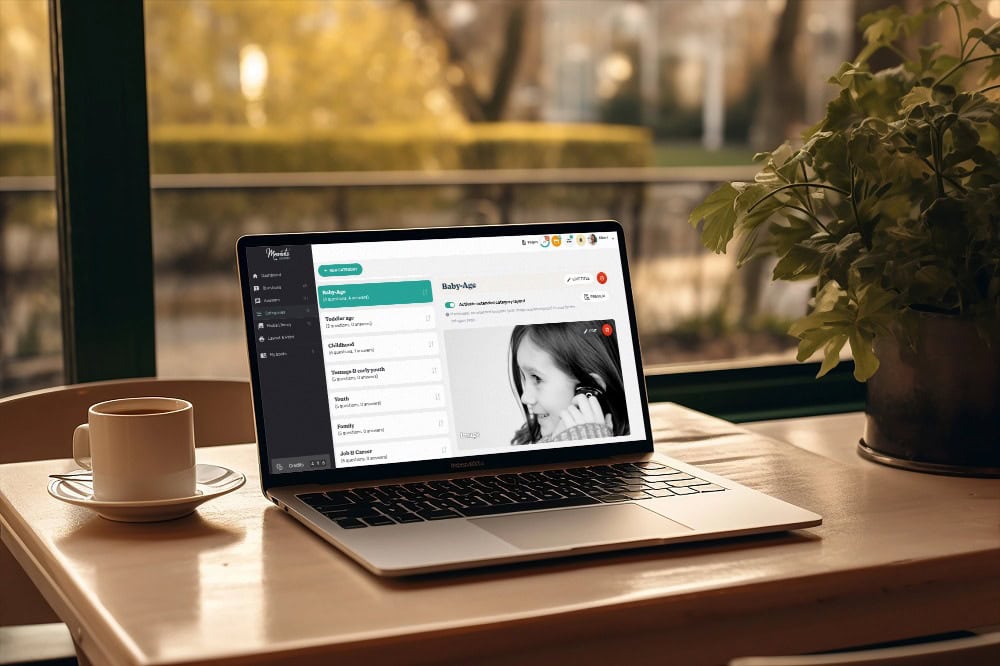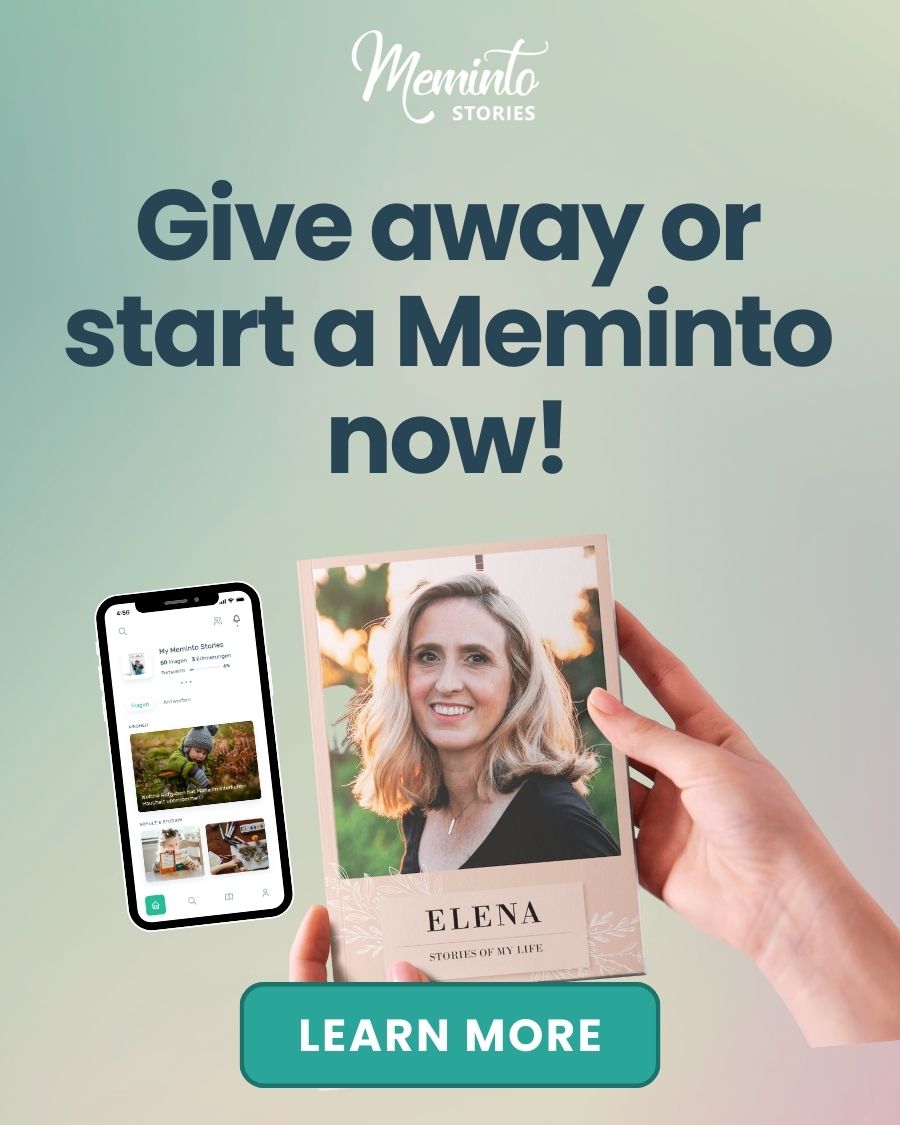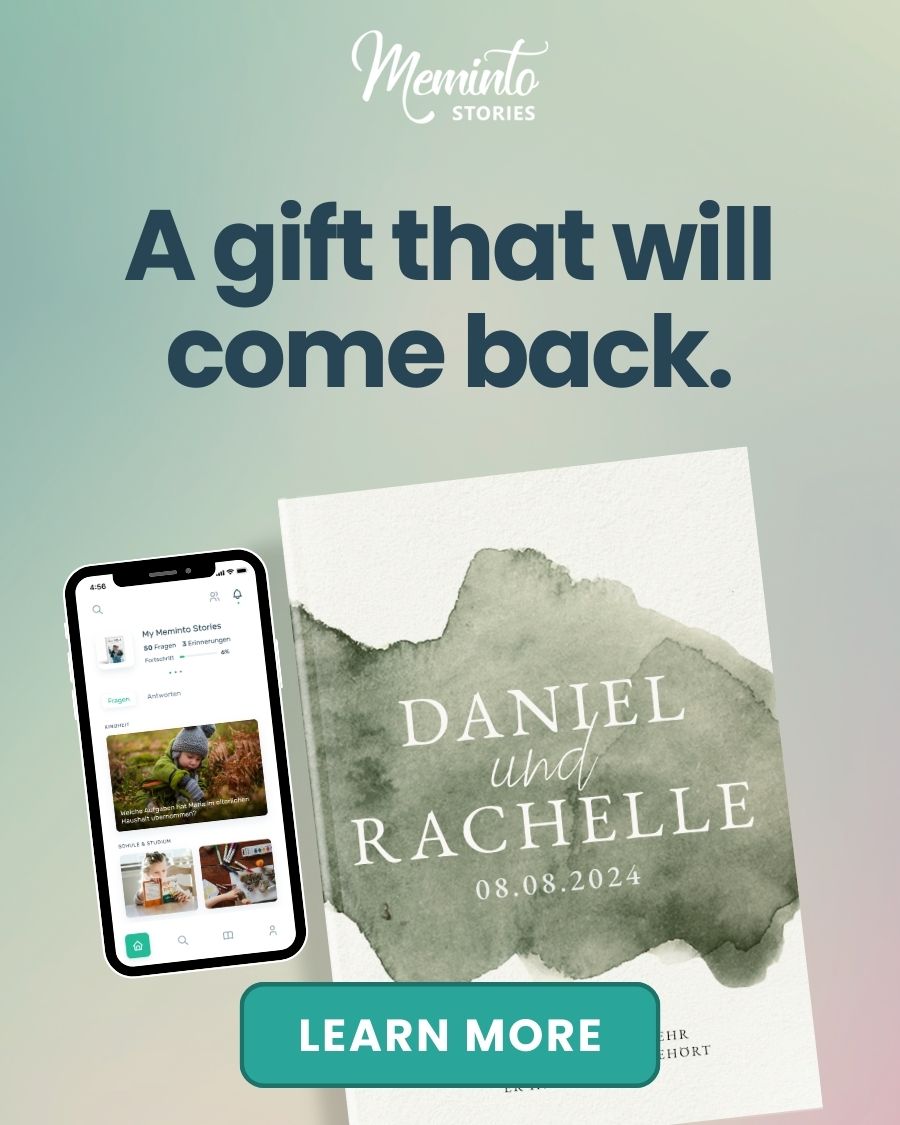Publishing a book is a dream many writers hold close, but the traditional publishing route makes it feel out of reach. That’s why most would go for self-publishing, which is a flexible and empowering way to share your story with the world.
Whether you’re writing a memoir, a novel, or a guidebook, self-publishing gives you complete creative control with no gatekeepers involved.

With the right guidance, you can transform your manuscript into a professional, published book, all on your own terms. Let’s explore how you can take charge of your creative journey and bring your book to life.
Key Takeaways
- Self-publishing gives you full creative and financial control over your book.
- Defining your genre and audience is the foundation of a successful publishing journey.
- Editing, formatting, and design are essential to creating a professional-quality book.
- An ISBN is optional in the UK, but it can help with wide distribution.
- Meminto offers an easy and cost-effective way to write and print your book.
- A strong marketing strategy is key to reaching your target audience.
- Tracking your book’s performance helps refine your approach for long-term success.


Why Self-Publish Your Book?
Self-publishing offers authors a unique opportunity to take full control of their creative and professional journey. Unlike traditional publishing, where decisions about your book’s content, design, and distribution may be out of your hands, self-publishing empowers you to call the shots.
It’s a flexible and increasingly popular option for writers who want to see their work in print without waiting years for approval from a publishing house.
Here are some reasons to consider self-publishing your book:
- Creative Freedom – You retain full control over your book’s content, design, and layout.
- Faster Publishing Timeline – Avoid lengthy submission processes and publish on your schedule.
- Higher Royalties – Keep a larger share of your book’s earnings compared to traditional publishing.
- Ownership of Rights – Maintain full rights to your book, including potential adaptations.
- Global Reach – Distribute your book worldwide through online platforms.
- Cost-Effective Options – Publish digitally or print on demand to minimize upfront costs.
- Building a Personal Brand – Self-publishing can help you establish authority in your niche.
- Customizable Marketing – Promote your book in ways that resonate with your target audience.
- Opportunity for New Writers – Break into the market without relying on publisher approval.
- Personal Fulfillment – Share your story exactly how you envision it with readers.
How do you Self-Publish a Book in the UK?
Self-publishing a book in the UK is a straightforward process that puts you in control of every aspect of your book’s creation and distribution. From writing and editing to choosing the right platforms, each step brings you closer to seeing your work in the hands of readers.
Here’s how you can successfully self-publish your book in the UK.
Decide on your book’s genre and target audience.
Deciding on your book’s genre and target audience is the foundation of a successful self-publishing journey. Your genre determines the tone, style, and themes of your book, while identifying your target audience helps you craft a story that resonates with the right readers.
Start by asking yourself what type of book you’re writing. Is it a gripping thriller, a heartfelt memoir, or an informative guide? Once you’ve nailed down the genre, think about who would be most interested in reading it. Consider factors like age, interests, and demographics.
For example, a children’s book will appeal to parents, teachers, and young readers, while a business guide will likely attract professionals and entrepreneurs.
Understanding your audience also helps with marketing later. Tailor your book’s design, tone, and promotional efforts to match what your readers expect and value. This clarity will set the stage for a book that truly connects.
Write and edit your manuscript.
Writing your manuscript is the heart of the self-publishing process. Start by organizing your ideas into a clear outline to guide your writing. Set realistic daily or weekly word count goals to maintain momentum. Once the draft is complete, step away for a bit before revisiting it for self-edits. Focus on refining the flow, clarity, and grammar.
Editing is equally crucial. While self-editing can catch basic issues, a professional editor ensures your book is polished and ready for readers. They can provide developmental edits for structure, copyediting for language, and proofreading for final touches. Don’t rush this phase; it’s your chance to elevate your work to professional standards.
Beta readers can also offer valuable feedback. These individuals represent your target audience and can highlight areas for improvement. Remember, a well-written and edited manuscript is what sets your book apart in the competitive publishing landscape.
Choose a captivating book title and cover design.
Your book’s title and cover are the first impressions readers get, so they need to grab attention and spark curiosity. A great title should be memorable, relevant to the content, and intriguing enough to draw readers in. Think about using descriptive words or metaphors that convey the essence of your book. Test potential titles with friends, beta readers, or online polls to see what resonates.
For the cover, professional design is key. It should be visually appealing and reflect the tone of your book’s genre. For instance, a romance novel might use warm colors and elegant fonts, while a thriller may rely on darker tones and bold text.
If you lack design skills, consider hiring a graphic designer or using tools like Canva or platforms like 99designs. A strong title and cover design not only entice readers but also establish credibility, making them worth the investment.
Format your book for print and digital platforms.
Formatting your book is a critical step to ensure it looks professional and is readable across all platforms. Print books require precise formatting to meet industry standards, such as proper margins, line spacing, and font choices. Tools like Adobe InDesign or Microsoft Word templates can help, or you can hire a professional formatter.
For digital platforms, your book needs to be formatted for e-readers like Kindle or Kobo. This involves creating an EPUB or MOBI file with features like a clickable table of contents and proper text alignment. Tools such as Scrivener or Reedsy can simplify the process.
Each platform has specific formatting guidelines, so be sure to check requirements for services like Amazon KDP or IngramSpark. A well-formatted book enhances the reading experience, making it crucial for both print and digital versions.
Obtain an ISBN (Optional)
An ISBN (International Standard Book Number) is not mandatory for self-publishing in the UK, but it is highly recommended if you want to distribute your book widely. The ISBN is a unique identifier that makes it easier for bookstores, libraries, and online retailers to catalog and sell your book.
If you’re publishing exclusively on platforms like Amazon Kindle Direct Publishing (KDP), an ISBN might not be necessary as they provide their own identifiers. However, if you plan to sell your book through multiple channels, including bookstores, obtaining an ISBN ensures your book is professionally recognized.
In the UK, you can purchase an ISBN from Nielsen UK ISBN Agency. You’ll need separate ISBNs for different formats (e.g., paperback, hardcover, and eBook). While it’s an added expense, having an ISBN enhances your book’s credibility and accessibility in the market.
Select a self-publishing platform
Choosing the right self-publishing platform or distributor is a crucial decision that affects your book’s reach and sales. When it comes to self-publishing, Meminto stands out as an excellent platform for authors looking to maintain complete control over their book while also offering unique features. Meminto not only allows you to publish your book but also enables you to create personalized, interactive experiences for your readers.
Whether you’re publishing a traditional novel or a more niche project like a memoir or guidebook, Meminto provides a flexible platform for both print and digital formats.
If you want to distribute directly, consider platforms like IngramSpark or Draft2Digital. IngramSpark allows you to distribute to bookstores, libraries, and online retailers, while Draft2Digital specializes in eBooks with options for wide distribution. Compare their fees, royalties, and distribution networks to find the best fit for your goals.
You can also use multiple platforms, such as combining Meminto for eBooks and Draft2Digital for distribution. The key is to align your choice with your book’s format, audience, and distribution needs.
Set your book’s pricing and royalty options
Setting the right pricing and royalty options helps in maximizing your book’s potential while also ensuring you’re fairly compensated for your work. With Meminto, you have full control over how much to charge for your book, whether it’s a print copy or a digital edition.
When setting your price, consider factors like the book’s length, genre, and target market. Research similar books in your niche to get a sense of what readers are willing to pay. If you’re unsure, start with a competitive price and adjust as needed based on sales and feedback.
Remember, your pricing strategy plays a significant role in both attracting readers and ensuring your profits. Carefully consider the balance between a competitive price and reasonable royalty earnings to ensure your success.
Develop a marketing and promotion strategy.
A strong marketing and promotion strategy is essential to getting your book in front of the right audience and driving sales. The success of your marketing efforts ultimately depends on how well you plan and execute your strategy.
Here are things to do when planning your marketing strategy;
- Identify Your Target Audience: Before you get into marketing, clearly define who your readers are. This will shape every promotional effort, from social media outreach to advertising. Consider factors like age, interests, and where they spend time online.
- Create an Author Website and Blog: Having an online presence helps you connect with readers and build credibility. Your website should include details about your book, an author bio, and a blog where you can share updates, behind-the-scenes looks, or related content that engages your audience.
- Leverage Social Media: Social platforms like Instagram, Facebook, and Twitter can be powerful tools to reach potential readers. Share teasers, book excerpts, and engage with your audience. Use relevant hashtags to increase visibility and collaborate with influencers or fellow authors for cross-promotion.
- Email Marketing: Build an email list by offering incentives like a free chapter or exclusive content in exchange for subscribers. Regularly communicate with your readers through newsletters about book updates, special offers, and future projects.
- Book Launch: Plan a book launch to create buzz around your book’s release. Consider offering limited-time discounts, exclusive content, or running giveaways. A launch event, whether virtual or in-person, can also help attract attention.
- Paid Ads and Promotions: Consider running ads on platforms like Amazon, Facebook, or Google to target potential readers based on their browsing habits and interests. Meminto’s platform also provides advertising opportunities to promote your book to a broader audience.
- Book Reviews: Reach out to bloggers, book reviewers, and influencers in your genre to get your book reviewed. Positive reviews from credible sources can significantly boost your book’s visibility and credibility.
- Participate in Book Fairs and Online Communities: Join online writing communities, attend virtual book fairs, or participate in author panels. Networking with other authors and readers can increase your exposure and open doors for promotional opportunities.
By creating a targeted, multi-channel marketing plan, you’ll increase your book’s chances of success and build a lasting connection with readers.
Launch your book and track its performance
Launching your book is an exciting milestone that sets the stage for its success. Start by creating buzz ahead of your launch date. Announce the release on your social media channels, website, and email list. Offer pre-order options if available, as they can generate initial sales and excitement. Consider hosting a virtual or in-person launch event where you can interact with readers, share your journey, and read excerpts from your book.
Once your book is live, focus on tracking its performance. Platforms like Amazon KDP or IngramSpark provide analytics to monitor sales, reader demographics, and reviews. Keep an eye on your book’s ranking and customer feedback to identify what’s working and what might need improvement.
Engage with your audience post-launch by responding to reviews, sharing milestones, and offering limited-time promotions to sustain momentum. Tracking performance helps refine your marketing efforts and ensures your book reaches its full potential.
Self-publishing with Meminto
Meminto offers you an efficient approach to self-publishing, perfect for authors seeking an easy way to bring their stories to life. Whether you’re writing a memoir, a guidebook, or a personalized keepsake, Meminto simplifies the process by allowing you to write and have your book printed with minimal effort and cost.
Meminto focuses on helping you create heartfelt, high-quality books tailored to your vision. You can design your book using intuitive tools and templates, ensuring a professional finish. Plus, the app provides flexibility for smaller-scale printing, which is ideal if you’re targeting a specific audience or creating a one-of-a-kind project.
Here’s how to create a book and publish with Meminto:
- Download the Meminto app or go to https://meminto.com/, then click on “Get Started”
- Pick who writes the memory book by choosing either “I Will” or “Someone Else Will.”
- Select the number of pages and input any other options you prefer. The system will generate your total, then click “Add to Cart.”
- Input your Shipping Details and select payment method preference. If you have a promo code, apply it to get a discount.
- Review and Confirm your order, then track your delivery status from the checkout page.
- Check Your Email for the confirmation and activation code, then go to memin.to/register.
- Enter your personal information, activation code, and password. Click “Sign up for Meminto” to start writing your story.
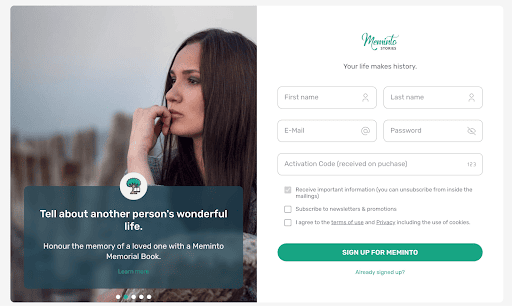
- Once registered, choose your language preference (English or German) and set the day you’d like to receive memory prompts.
- Personalize your memory book design by selecting layouts and other design preferences.
- Customize the book to fit your needs.
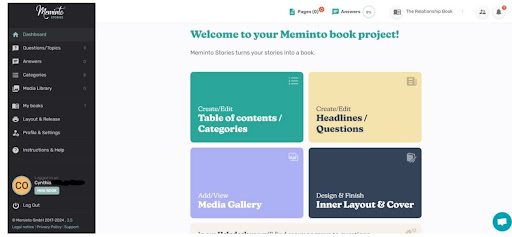
11. Watch the instructional video below so you can get better guidance on how you can use the Meminto app.
You are currently viewing a placeholder content from YouTube. To access the actual content, click the button below. Please note that doing so will share data with third-party providers.
More InformationBy choosing Meminto, you maintain full control over your book’s creative direction without the pressure of extensive upfront expenses. It’s a straightforward, budget-friendly option for anyone looking to turn their ideas into a tangible product with ease.
Wrapping Up!
Self-publishing a book in the UK has never been more accessible, offering authors complete creative control and the ability to bring their vision to life. From choosing your book’s genre to crafting a marketing strategy, every step is a valuable part of the journey.
Platforms like Meminto simplify the process further, providing tools to help you write, design, and print your book at a minimal cost.
With careful planning and dedication, your book can become a reality, reaching readers who will connect with your words and ideas.
Ready to publish your first, second, or hundredth book? Get started with Meminto today!










